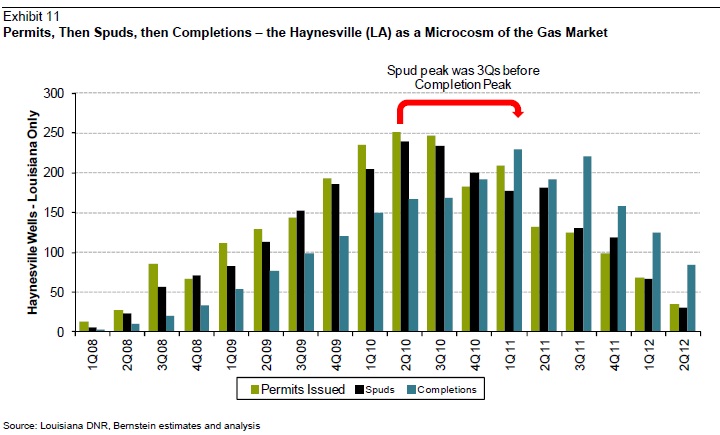However, when pressure pumping capacity can’t keep up with the rig count, as was generally the case in
2010, there exists a lag between drilling and completions. This lag is usually around a quarter, simply due
to logistical issues of moving both the rig and completion equipment. However, in the Haynesville, the
backlog expanded to 6+ months as pressure pumping capacity fell short of demand. Drilled wells (spuds)
outnumbered completions through 4Q10, at which point pressure pumping supply caught up and
completions overtook spuds (Exhibit 11).
Therefore the increase in Haynesville production was not so much to do with new wells being drilled, but
more the backlog of wells available for completion that had already been drilled (Exhibit 12). While a
(greatly shrunk) backlog still exists, its current level could likely sustain flattish production for only an
additional few months without new drilling.
With the backlog almost fully eroded and only ~20 rigs now drilling in the play, the chance for material
declines in the December or January timeframe remain a distinct probability, potentially to the tune of ~200 mmcfd a month (referring back to Exhibit 9 – but noting that absolute declines decrease as the overall production base falls).
